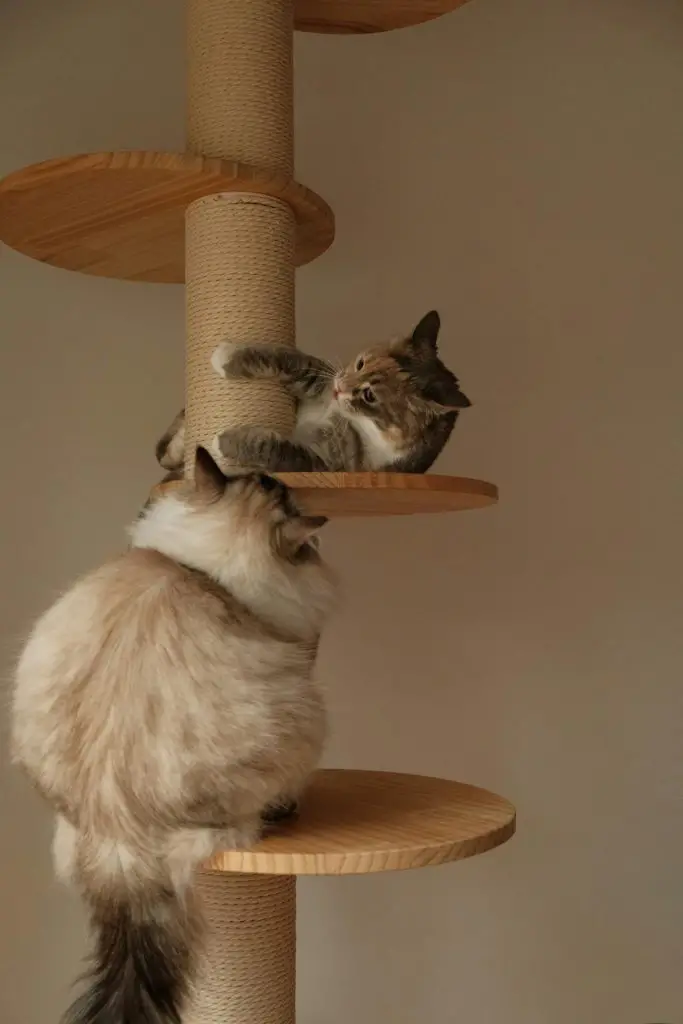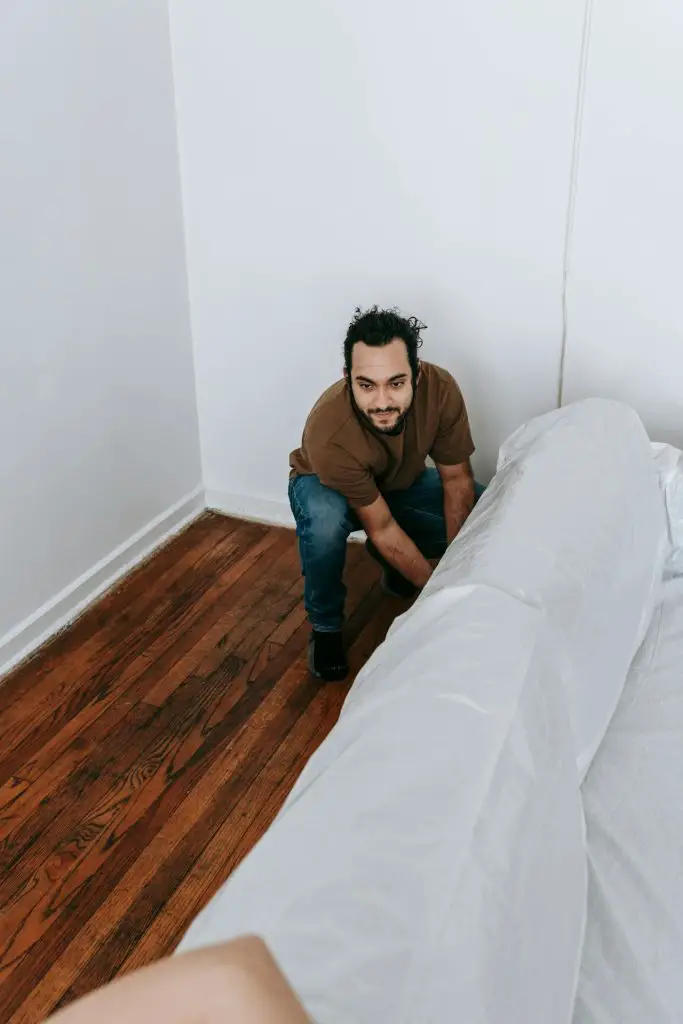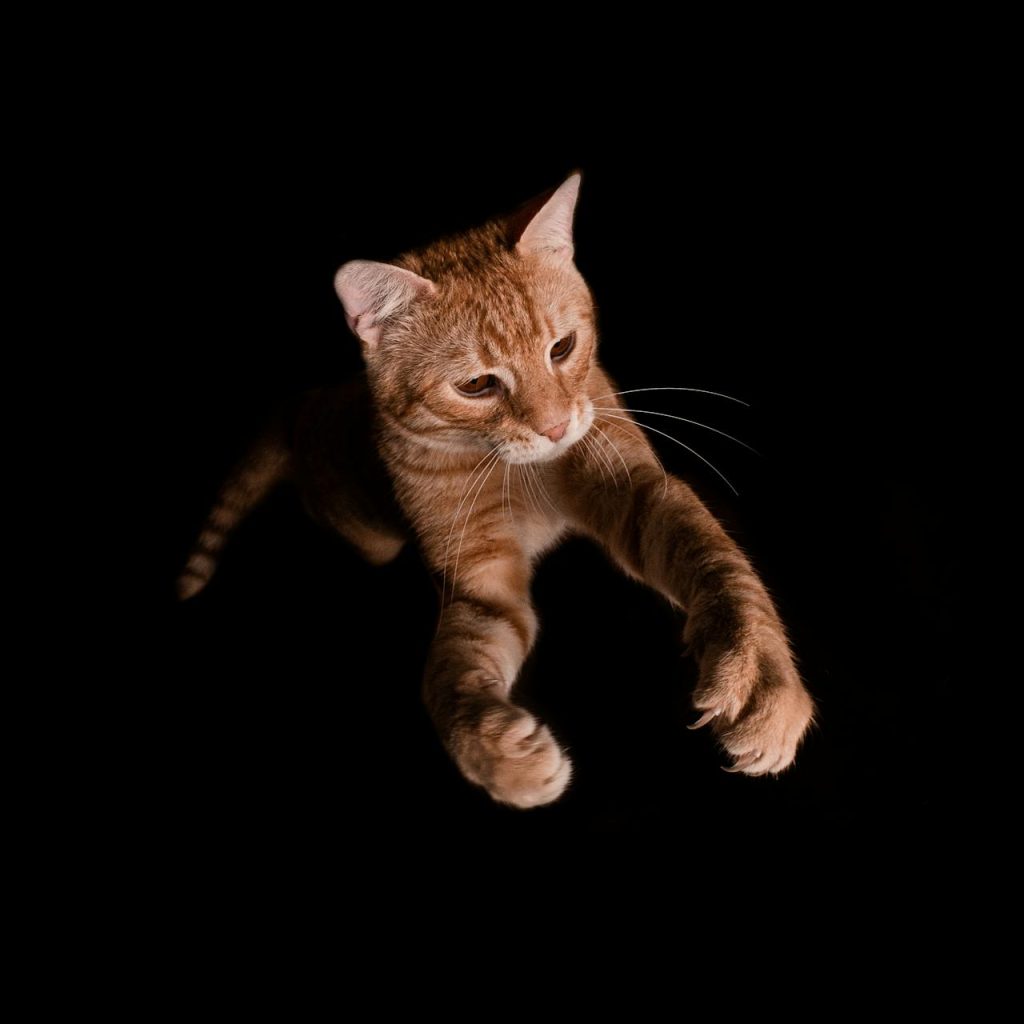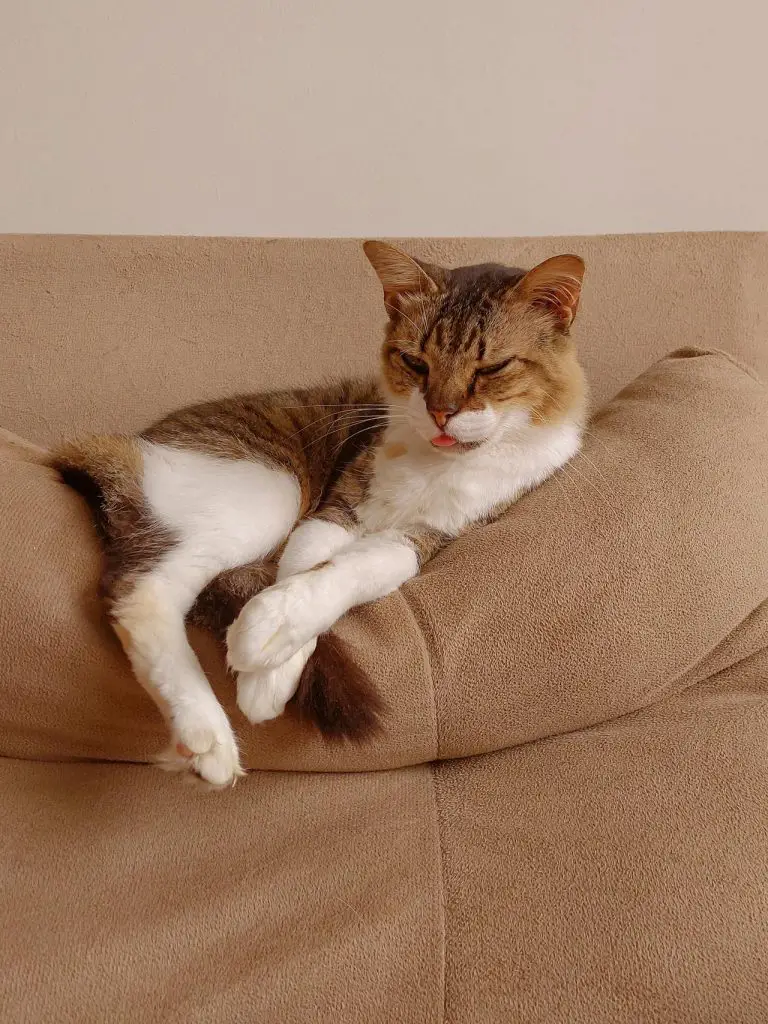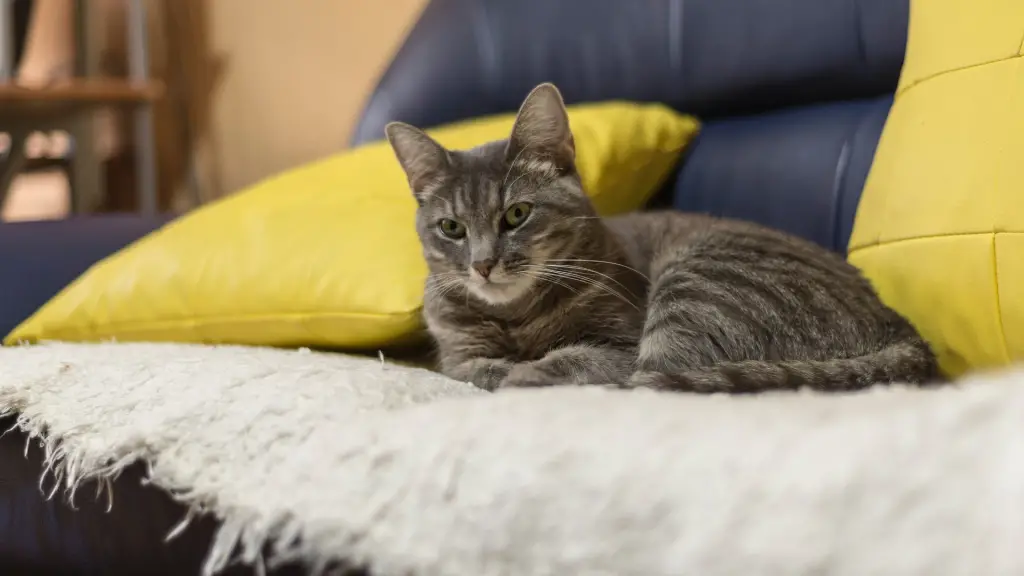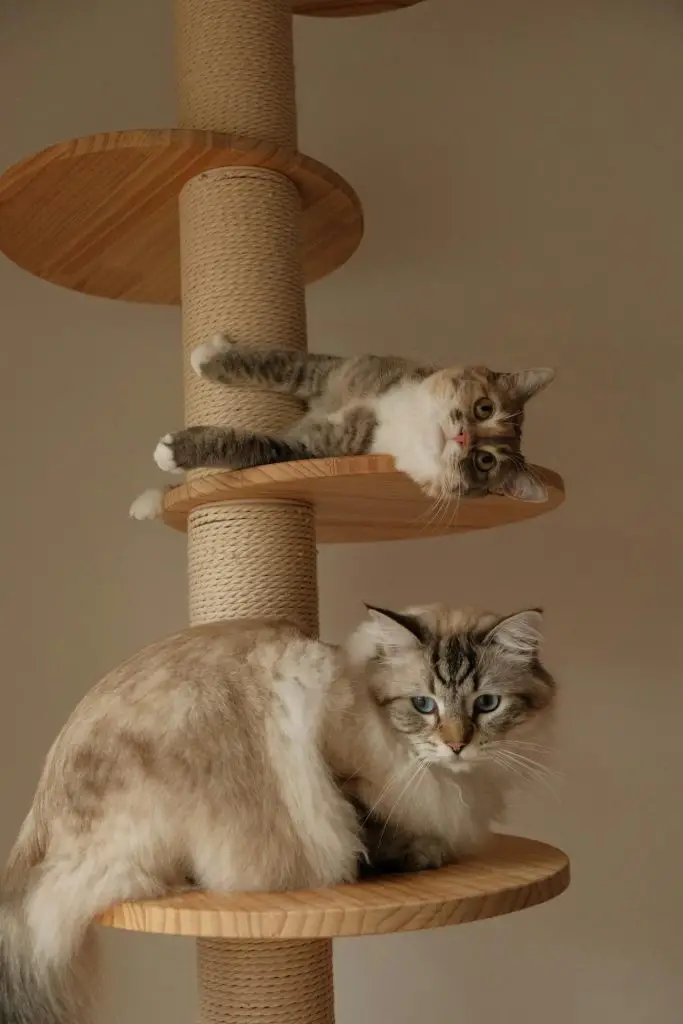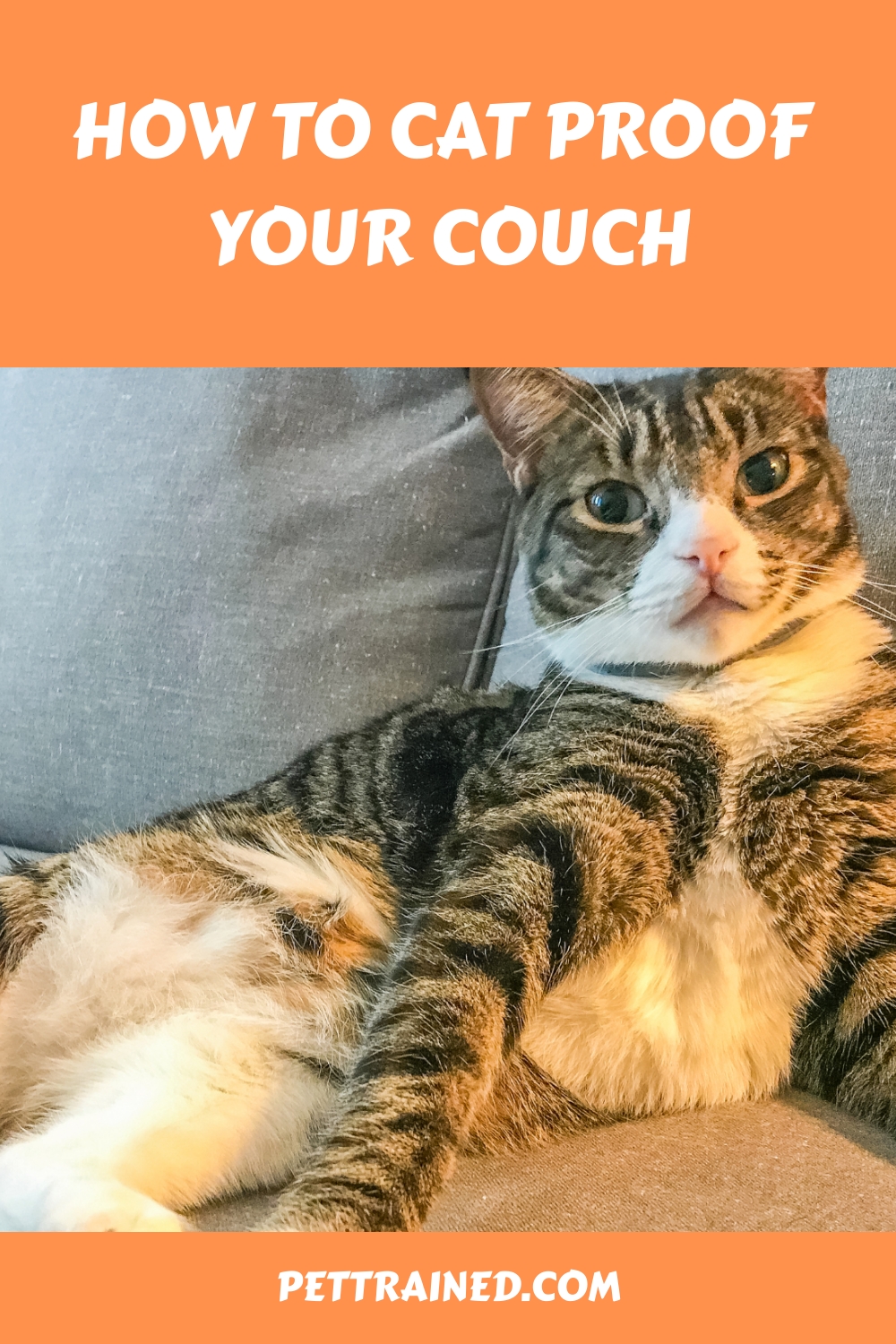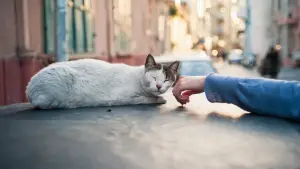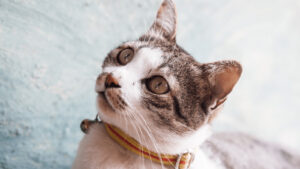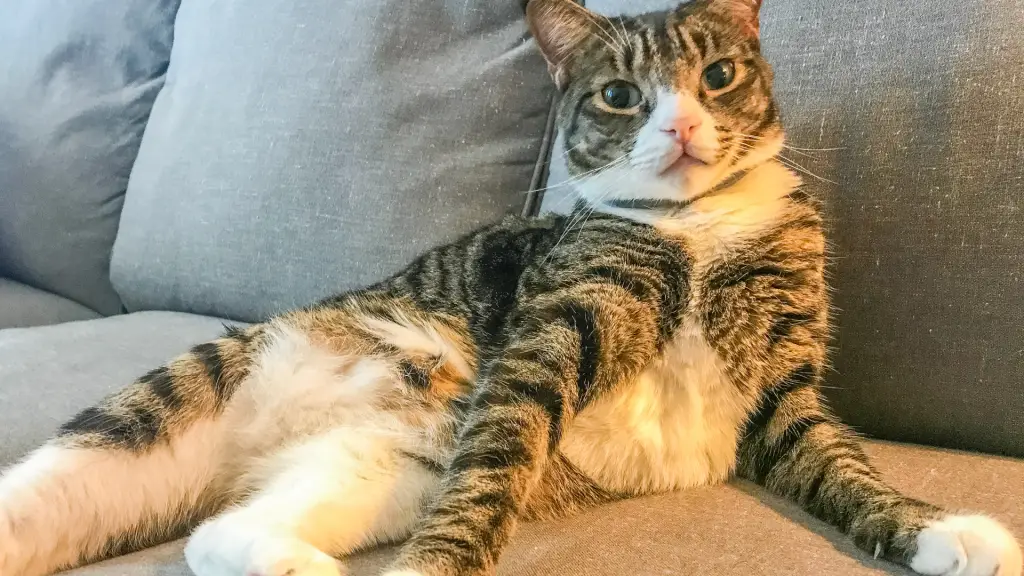
To cat-proof your couch, you’ll need a multi-faceted approach that addresses scratching behavior, fabric selection, and clever deterrents. Start by choosing cat-friendly fabrics like microfiber, faux suede, or tightly woven cotton blends that can withstand scratching. Train your cat to use scratching posts by placing them near favorite sleeping spots and enticing them with catnip or treats. Use protective covers to shield your couch from accidents and scratches. Regularly trim your cat’s claws to prevent damage, and block access to sofa edges using foam inserts or scratch guards. By implementing these measures, you’ll be well on your way to a cat-proofed couch – and there’s even more you can do to secure your furniture.
Table of Contents
1. Choose Durable Fabrics for Your Couch
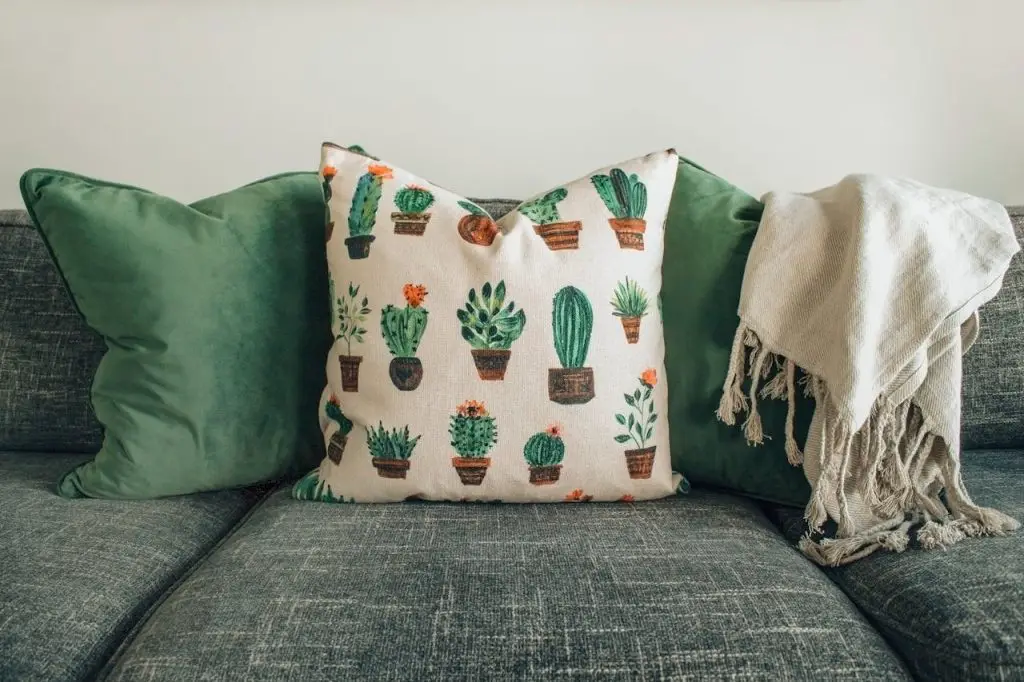
To safeguard your couch from claw marks and scratches, select a fabric that’s deliberately designed to withstand your cat’s natural scratching behavior, such as microfiber, faux suede, or tightly woven cotton blends.
These durable fabrics can help reduce damage from your cat’s claws, making them ideal for pet owners.
You’ll also want to take into account the weave and texture of the fabric, as loose weaves or soft textures can be tempting for cats to scratch.
In addition to durability, you’ll want to evaluate color options that will help hide stains and scratches. Darker colors and patterns can be great for hiding imperfections, while lighter colors may show stains and scratches more easily.
This post contains affiliate links. However all the information provided on this site are my own honest opinions. See more in Disclaimer.
When choosing a fabric, think about your cat’s personality and habits – if they like to scratch or shed a lot, a darker color may be a better choice.
By selecting a durable fabric with a suitable color and texture, you can help protect your couch from damage and keep it looking great for years to come.
This simple step can save you money and stress in the long run, making it a worthwhile investment for cat owners.
2. Train Your Cat to Scratch Posts
Scratching posts become an essential tool in redirecting your cat’s natural scratching behavior away from your couch when you provide an appealing alternative that caters to their instinctual needs.
By offering a suitable scratch post, you’ll encourage your cat to scratch, stretch, and mark the area with their scent glands located on their paws.
Effective scratch training involves placing the post near your cat’s favorite sleeping spot or high-traffic area, ensuring maximum visibility and allure.
To entice your cat to use the scratch post, sprinkle catnip or treats on the surface, and provide positive reinforcement by praising them when they scratch the post.
Rewarding desired behavior will strengthen the association between scratching the post and receiving a reward.
As your cat becomes accustomed to scratching the post, you can gradually reduce the number of treats and praise, allowing the learned behavior to become a natural part of their daily routine.
3. Use Protective Covers Always
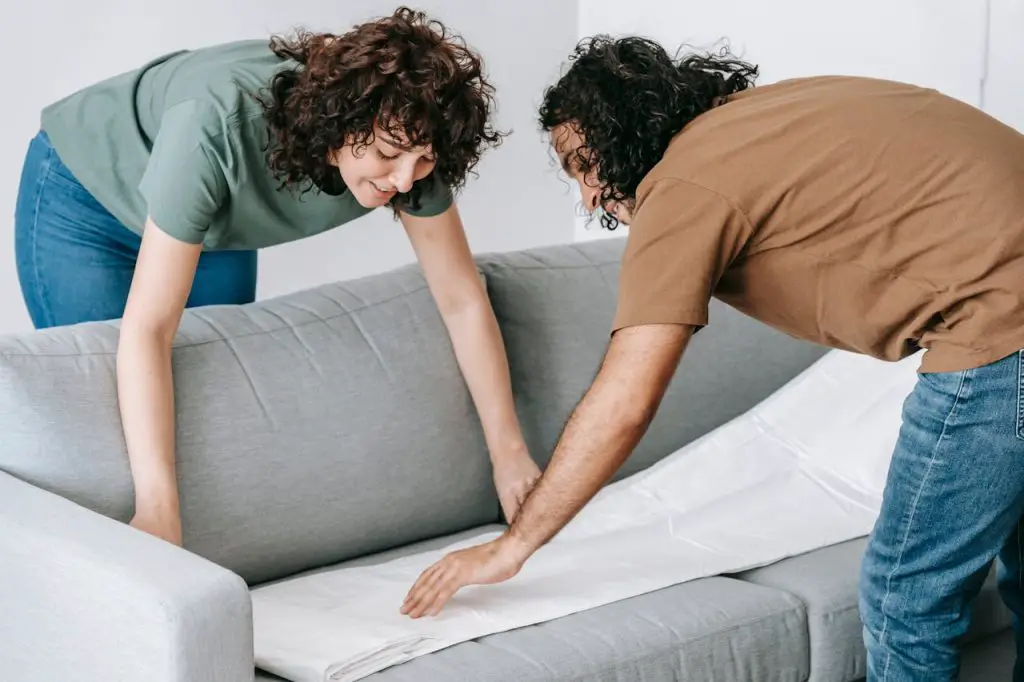
You’re taking a vital step in protecting your couch from cat damage by using protective covers always.
To maximize their effectiveness, you need to choose the right material, select a cover that’s the perfect size and fit for your couch, and consider easy cleaning options.
Choosing the Right Material

Selecting a durable, stain-resistant material for your couch is essential in withstanding the inevitable scratching, clawing, and accidents that come with sharing your space with a feline companion.
You’ll want to prioritize fabric durability when choosing a material, as it will directly impact the lifespan of your couch.
Consider opting for synthetic fabrics like microfiber or polyester, which are often more resistant to wear and tear than natural fibers.
Additionally, look for materials with a high rub count, which indicates their ability to withstand repeated scratching and clawing.
When it comes to color selection, choose a hue that will hide stains and spills well.
Darker colors like navy blue, charcoal grey, or brown are excellent options, as they’ll help mask any accidents. Avoid light-colored fabrics, as they’ll show stains and dirt more easily.
Cover Size and Fit
To safeguard your couch from cat-related damage, it’s crucial to invest in a protective cover that fits snugly and accurately, taking into account the dimensions and contours of your furniture.
You’ll need to measure your couch carefully, noting its length, width, and height. Make sure to record any unique features, such as curved arms or adjustable headrests, which may impact the cover’s fit.
When choosing a protective cover, select one that matches your couch dimensions as closely as possible. Consider the fabric’s stretch, as some materials will fit more smoothly over curved or irregular surfaces.
A well-fitted cover won’t only shield your couch from cat scratches and spills but also prevent the cover from shifting or bunching, which can create a tripping hazard.
Easy Cleaning Options
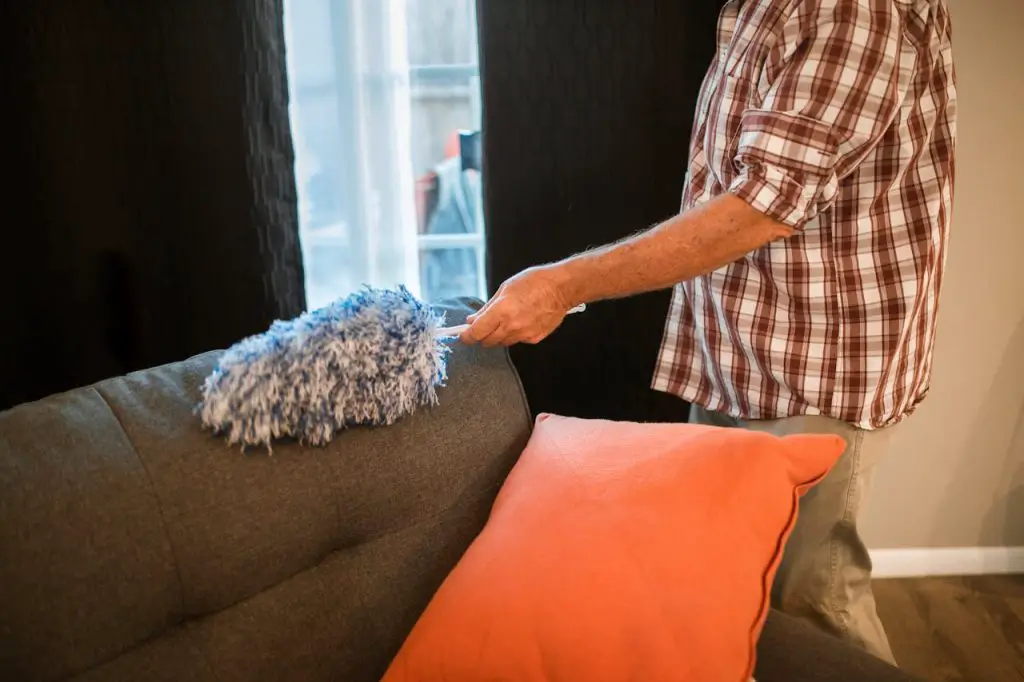
Having a protective cover with an easy cleaning option is essential for minimizing the damage caused by your cat’s spills, scratches, or shedding, because accidents can happen at any moment.
You’ll want to choose a cover that’s specifically designed for pet owners, with features like waterproofing, stain resistance, and easy-removal designs.
Look for covers made from durable, easy-to-clean materials like microfiber or polyester.
When accidents do happen, you’ll be able to quickly and easily clean up the mess without worrying about damaging your couch.
Vacuum regularly, focusing on areas where your cat likes to sleep or scratch. For tougher stains or spills, consider using an upholstery cleaning product specifically designed for pet accidents.
Make certain to always follow the manufacturer’s instructions when using any cleaning products, and test a small area of the cover first to guarantee you won’t damage the material.
4. Trim Your Cat’s Claws Regularly
How often do you inspect your cat’s claws, which can wreak havoc on your couch if left untrimmed?
If you’re not regularly checking and trimming your cat’s claws, you’re likely to find that your couch is suffering the consequences.
Trending in Cats:
Regular claw trimming is essential to prevent damage to your furniture and to keep your cat’s nails healthy.
By incorporating nail care into your cat’s grooming routine, you can help prevent overgrowth, cracking, and splitting.
To trim your cat’s claws effectively, you’ll need to invest in a good pair of cat nail clippers.
Choose a pair that’s designed specifically for cats, as they have a unique curved blade that helps to prevent cutting the quick (the sensitive part of the nail).
Trim your cat’s claws every 4-6 weeks, or as needed. Start by gently holding your cat’s paw and identifying the quick. Then, carefully trim the nail, taking care not to cut too short.
Reward your cat with treats and praise for their good behavior.
5. Block Access to Sofa Edges
Nearly all sofas are vulnerable to cat damage at the edges, where cats love to scratch, claw, and jump up. This is why blocking access to these areas is crucial to preserving your couch’s integrity.
To achieve this, you can use edge barriers, such as foam inserts or scratch guards, specifically designed for cat-proofing.
These barriers will deter your cat from scratching and clawing the edges, thereby protecting the underlying structure of your sofa.
Another effective strategy is furniture rearrangement. By positioning your sofa flush against a wall or corner, you can limit your cat’s access to the edges.
You can also place a console table or a bookshelf against the sofa to block the narrow gap between the sofa and the wall, further restricting your cat’s movement.
This combined approach of using edge barriers and furniture rearrangement will effectively block access to sofa edges, safeguarding your couch from feline damage.
By implementing these measures, you’ll guarantee your sofa remains intact and your cat’s attention is redirected away from destructive behavior.
6. Secure the Sofa Cushions
Your cat’s instinct to dig, scratch, and burrow can quickly turn your sofa cushions into a flattened, lumpy mess, which is why securing them is essential to maintaining your couch’s comfort and appearance.
To keep your cushions intact, you’ll need to take some proactive steps.
Here are four ways to secure your sofa cushions:
- Use cushion covers: Invest in durable, removable covers that can be easily washed and replaced. This will help protect your cushions from stains, scratches, and hair.
- Tie cushions down: Use ties or straps to secure cushions to the sofa frame, preventing them from being displaced or tossed around.
- Fluff and rotate regularly: Regular cushion maintenance is key to preventing flat spots and uneven wear. Fluff and rotate your cushions every few weeks to keep them looking their best.
- Use cushion clips: Consider using cushion clips or clamps to keep cushions in place, especially if your cat likes to burrow or dig into the couch.
7. Spray Sofa With Deterrent
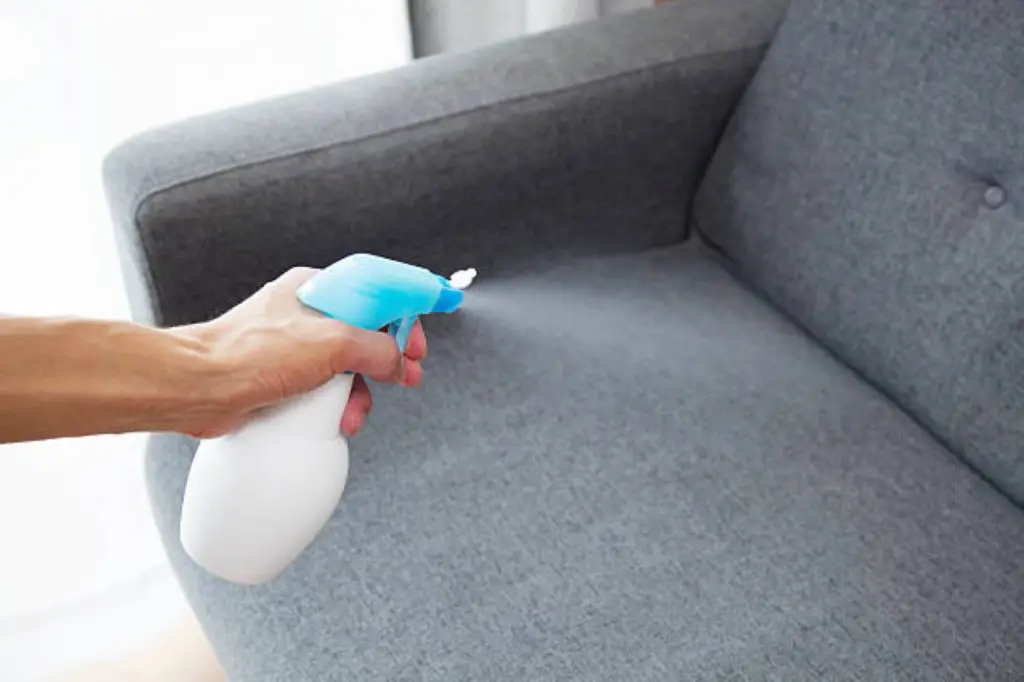
Spraying your sofa with a deterrent specifically designed to repel cats can help curb their instinct to scratch, dig, or mark the couch.
You’ll find various deterrent types on the market, including citrus-based sprays, vinegar-based solutions, and synthetic pheromone products. When choosing a deterrent, consider your cat’s individual sensitivities and preferences.
Application methods also vary, but it’s vital to spray the entire sofa surface, including cushions, arms, and legs. Make sure to follow the product’s instructions for peak effectiveness.
You may need to reapply the deterrent regularly, as its potency can decrease over time.
To maximize the deterrent’s impact, spray it on the sofa when your cat isn’t around, allowing the scent to settle before they return.
By using a deterrent, you can discourage your cat from targeting the sofa, redirecting their attention to more acceptable surfaces.
As you spray, remember that consistency and patience are key in cat-proofing your couch.
8. Provide Alternative Scratch Spots
By placing scratching posts or pads near your sofa, you can redirect your cat’s scratching instinct to a more suitable surface, sparing the couch from damage.
Cats need to scratch to maintain their nails, stretch, and mark their territory, so it’s crucial to provide them with scratching alternatives.
Understanding cat behavior is key to providing the right scratching surfaces.
Here are four tips for providing effective scratching alternatives:
- Observe your cat’s preferences: Watch your cat’s behavior to determine their preferred scratching texture, angle, and location.
- Choose the right material: Offer scratching posts or pads made from materials like sisal, corrugated cardboard, or carpet.
- Position strategically: Place scratching surfaces near areas where your cat tends to scratch, such as near sleeping spots or entry points.
- Provide multiple options: Offer multiple scratching surfaces to cater to your cat’s varied preferences and moods.
Frequent Questions
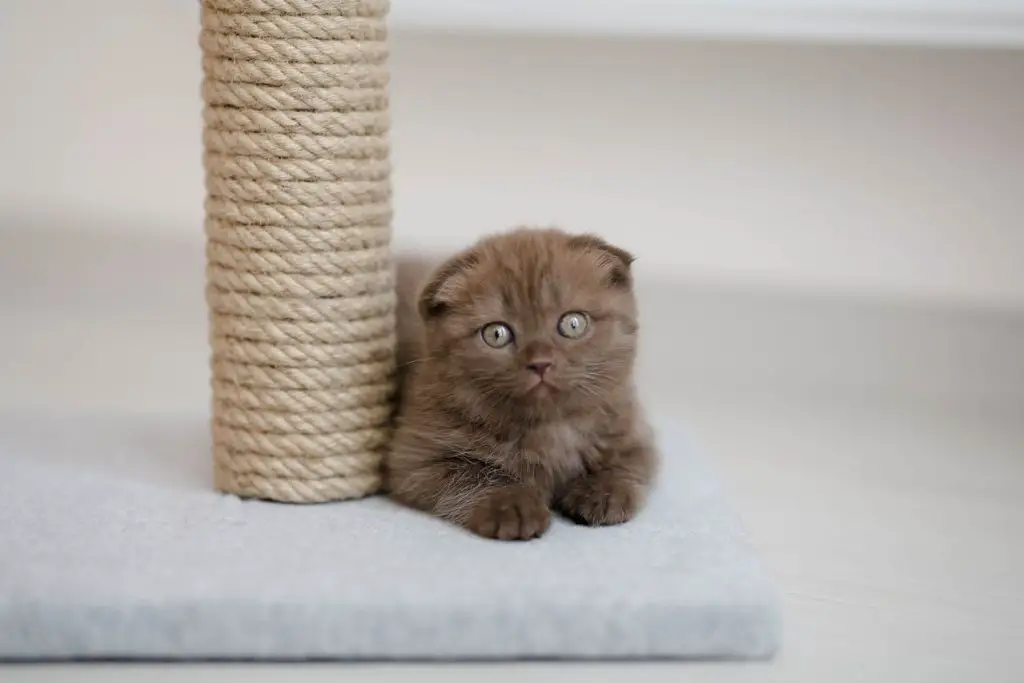
“Like a knight shielding its kingdom, you can defend your leather couch from feline foes. Employ leather couch protection strategies and provide cat scratching alternatives, redirecting their attention to save your throne from destruction.”
You’ll tackle cat hair removal by using a lint roller or rubber glove to pick up loose hairs, then follow up with upholstery cleaning products specifically designed for pet hair and dander, scrubbing gently.
You’re conjuring up images of mangled sofas, aren’t you? Don’t worry, cat proofing won’t butcher your couch’s style; material alternatives like stain-resistant fabrics and furniture covers will blend functionality with aesthetic considerations seamlessly.
You’ll be pleased to know that cat proofing can indeed provide accident prevention and spill protection, ensuring your couch remains stain-free and undamaged, as it creates a barrier against unexpected mishaps and messy spills.
You’ll only notice the destruction after it’s too late, so set an inspection schedule to check your cat-proofed sofa weekly, because, let’s face it, cat behavior is unpredictable, and your cat’s plotting against it.



